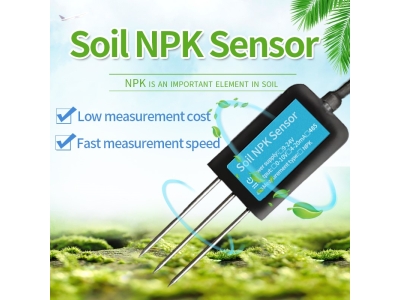Soil sensors play a crucial role in modern agriculture by providing accurate and real-time data about soil moisture, temperature, and nutrient levels. This information is essential for farmers to optimize irrigation and fertilization practices, leading to higher crop yields, reduced resource wastage, and improved sustainability. However, to ensure the effectiveness and reliability of soil sensors, it is important to follow a set of specifications and guidelines in their installation, operation, and maintenance. This article aims to provide a comprehensive specification for the use of soil sensors in agricultural settings.

Sensor Selection:
a. Choose sensors from reputable manufacturers that specialize in agricultural applications.
b. Consider the specific requirements of your crops and soil types when selecting the appropriate sensors.
c. Opt for sensors with a high level of accuracy, durability, and resistance to environmental factors such as temperature, humidity, and corrosion.
Sensor Placement:
a. Install sensors at representative locations within the field to obtain accurate and representative data.
b. Ensure that the sensors are inserted to the recommended depth range for accurate measurements.
c. Take into account the spatial variability of the soil properties when determining the number and placement of sensors.
d. Install sensors away from irrigation lines or other potential sources of interference that may affect measurements.
Sensor Calibration:
a. Calibrate sensors regularly according to the manufacturer’s instructions or industry best practices.
b. Conduct calibration after sensor installation and before the start of each growing season.
c. Use standard reference methods or instruments to validate and adjust sensor measurements if necessary.
Data Collection and Management:
a. Establish a robust data collection system that allows for reliable and uninterrupted data recording.
b. Determine the optimal data collection frequency based on the crop’s growth stage and water requirements.
c. Use data loggers or automated systems for continuous monitoring and recording of sensor measurements.
d. Store and manage data in a secure and easily accessible format for analysis and decision making.
Maintenance and Quality Control:
a. Regularly inspect sensors for any physical damage, signs of wear, or malfunctioning.
b. Clean sensors periodically to remove any accumulated dirt or debris that may affect sensor readings.
c. Conduct routine quality control checks using standard solutions or reference sensors to verify accuracy.
d. Follow manufacturer guidelines for sensor maintenance, battery replacement, and firmware updates.
Data Interpretation and Analysis:
a. Use specialized software or data analysis tools to interpret sensor data accurately and derive meaningful insights.
b. Compare sensor readings with established threshold values or plant-specific requirements to identify irrigation or nutrient management needs.
c. Consider consulting with agricultural experts or agronomists for assistance in data interpretation and decision making.
Conclusion:
The use of soil sensors in agriculture has revolutionized crop management, enabling farmers to make informed decisions based on real-time data. By adhering to the specifications outlined in this article, farmers can ensure the optimal performance and reliability of soil sensors, leading to enhanced productivity, resource efficiency, and environmental sustainability. Embracing the use of soil sensors is a step towards precision agriculture and a more sustainable future for the agricultural industry.






